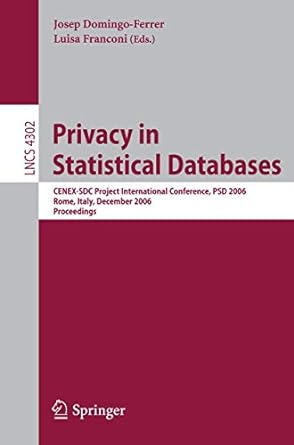Answered step by step
Verified Expert Solution
Question
1 Approved Answer
2 . TEST ITEMS ( Specify the test items included in the plan. Supply references to the following item documentation: Requirements specification, Design specification, Users
TEST ITEMS
Specify the test items included in the plan. Supply references to the following item documentation:
Requirements specification,
Design specification,
Users guide,
Operations guide,
Installation guide,
Features availability response time
Defect removal procedures, and
Verification and validation plans.
Program Modules
Outline testing to be performed by the developer for each module being built.
Job Control Procedures
Describe testing to be performed on job control language JCL production scheduling and control, calls, and job sequencing.
User Procedures
Describe the testing to be performed on all user documentation to ensure that it is correct, complete, and comprehensive.
Operator Procedures
Describe the testing procedures to ensure that the application can be run and supported in a production environment include Help Desk procedures
FEATURES TO BE TESTED
Identify all software features and combinations of software features to be tested. Identify the test design specifications associated with each feature and each combination of features.
FEATURES NOT TO BE TESTED
Identify all features and specific combinations of features that will not be tested along with the reasons.
APPROACH
Describe the overall approaches to testing. The approach should be described in sufficient detail to permit identification of the major testing tasks and estimation of the time required to do each task. Identify the types of testing to be performed along with the methods and criteria to be used in performing test activities. Describe the specific methods and procedures for each type of testing. Define the detailed criteria for evaluating the test results.
For each level of testing there should be a test plan and the appropriate set of deliverables. Identify the inputs required for each type of test. Specify the source of the input. Also, identify the outputs from each type of testing and specify the purpose and format for each test output. Specify the minimum degree of comprehensiveness desired. Identify the techniques that will be used to judge the comprehensiveness of the testing effort. Specify any additional completion criteria eg error frequency The techniques to be used to trace requirements should also be specified.
Component Testing
Testing conducted to verify the implementation of the design for one software element eg unit, module or a collection of software elements. Sometimes called unit testing. The purpose of component testing is to ensure that the program logic is complete and correct and ensuring that the component works as designed.
Integration Testing
Testing conducted in which software elements, hardware elements, or both are combined and tested until the entire system has been integrated. The purpose of integration testing is to ensure that design objectives are met and ensures that the software, as a complete entity, complies with operational requirements. Integration testing is also called System Testing.
Conversion Testing
Testing to ensure that all data elements and historical data is converted from an old system format to the new system format.
Job Stream Testing
Testing to ensure that the application operates in the production environment.
Interface Testing
Testing done to ensure that the application operates efficiently and effectively outside the application boundary with all interface systems.
Security Testing
Testing done to ensure that the application systems control and auditability features of the application are functional.
Recovery Testing
Testing done to ensure that application restart and backup and recovery facilities operate as designed.
Performance Testing
Testing done to ensure that that the application performs to customer expectations response time, availability, portability, and scalability
Regression Testing
Testing done to ensure that that applied changes to the application have not adversely affected previously tested functionality.
Acceptance Testing
Testing conducted to determine whether or not a system satisfies the acceptance criteria and to enable the customer to determine whether or not to accept the system. Acceptance testing ensures that customer requirements' objectives are met and that all components are correctly included in a customer package.
Beta Testing
Testing done by the customer, using a prerelease version of the product to verify and validate that the system meets business functional requirements. The purpose of beta testing is to detect application faults, failures, and defects.
PASS FAIL CRITERIA
Specify the criteria to be used to determine whether each item has passed or failed testing.
Suspension Criteria
Specify the crihjhj
Step by Step Solution
There are 3 Steps involved in it
Step: 1

Get Instant Access to Expert-Tailored Solutions
See step-by-step solutions with expert insights and AI powered tools for academic success
Step: 2

Step: 3

Ace Your Homework with AI
Get the answers you need in no time with our AI-driven, step-by-step assistance
Get Started


